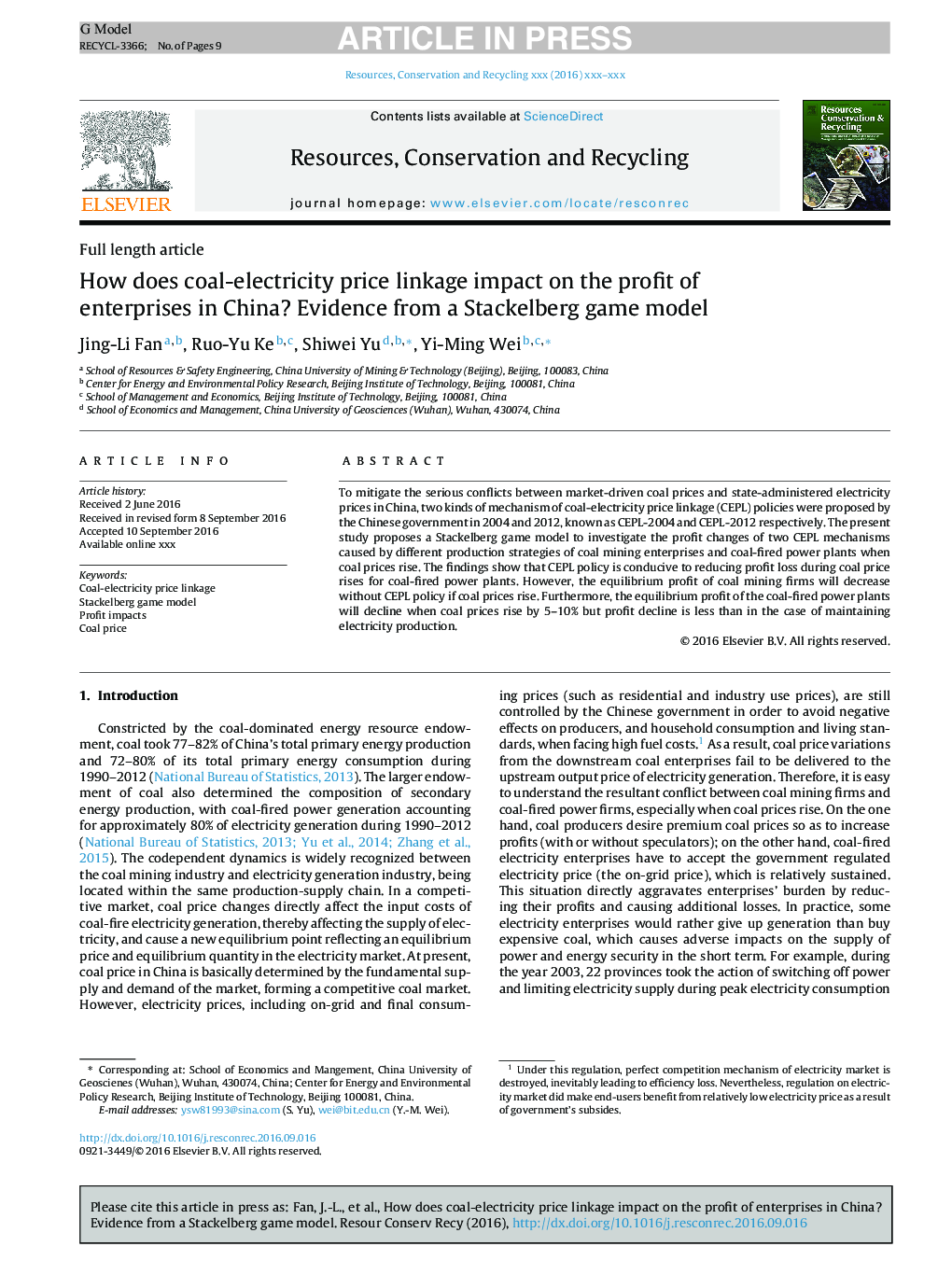| Article ID | Journal | Published Year | Pages | File Type |
|---|---|---|---|---|
| 7494620 | Resources, Conservation and Recycling | 2018 | 9 Pages |
Abstract
To mitigate the serious conflicts between market-driven coal prices and state-administered electricity prices in China, two kinds of mechanism of coal-electricity price linkage (CEPL) policies were proposed by the Chinese government in 2004 and 2012, known as CEPL-2004 and CEPL-2012 respectively. The present study proposes a Stackelberg game model to investigate the profit changes of two CEPL mechanisms caused by different production strategies of coal mining enterprises and coal-fired power plants when coal prices rise. The findings show that CEPL policy is conducive to reducing profit loss during coal price rises for coal-fired power plants. However, the equilibrium profit of coal mining firms will decrease without CEPL policy if coal prices rise. Furthermore, the equilibrium profit of the coal-fired power plants will decline when coal prices rise by 5-10% but profit decline is less than in the case of maintaining electricity production.
Keywords
Related Topics
Physical Sciences and Engineering
Energy
Renewable Energy, Sustainability and the Environment
Authors
Jing-Li Fan, Ruo-Yu Ke, Shiwei Yu, Yi-Ming Wei,
